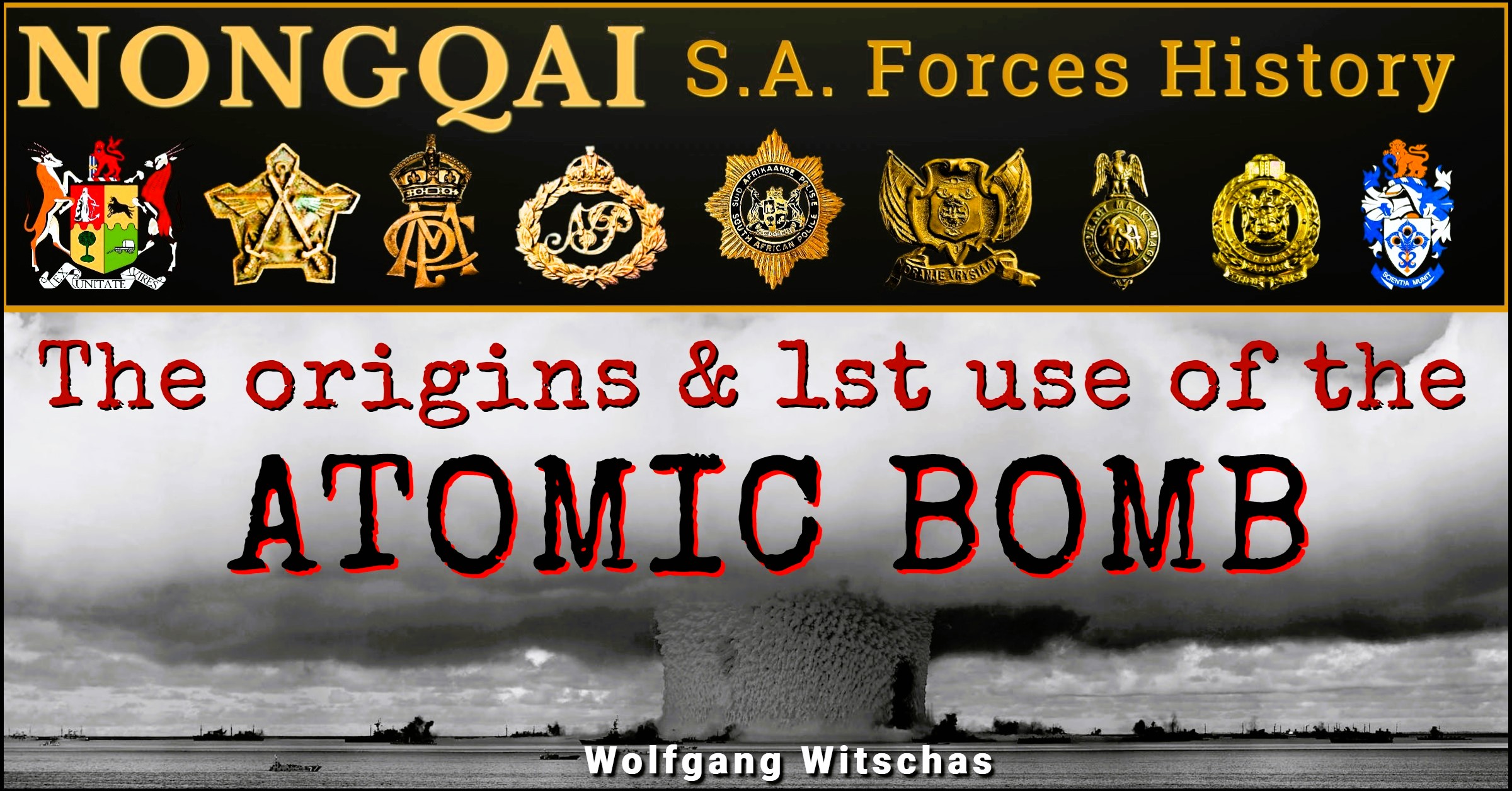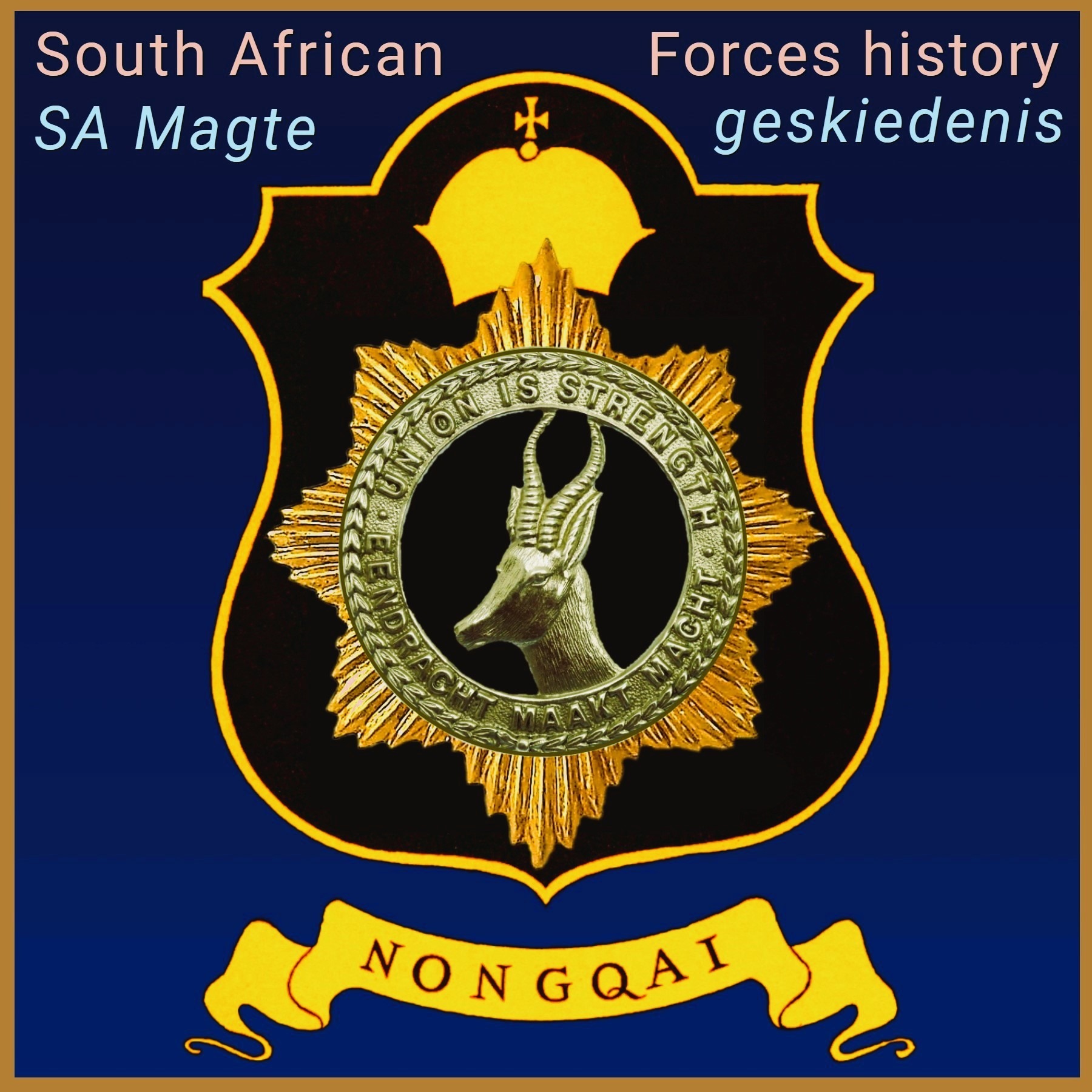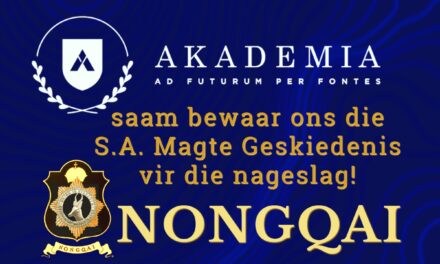
ABSTRACT: During the 70s and 80s South Africa had invested heavily in acquiring an own nuclear deterrent – then, to become the only known nuclear power to voluntarily do away with its nuclear arms and delivery systems in the early 90s. But what were the origins of nuclear weapons? When, where and by whom were they invented and developed, and then first used? This article reviews the answers to those questions.
Introduction
The discovery of nuclear fission by German chemists Otto Hahn and Fritz Strassmann in 1938, and its theoretical explanation by Lise Meitner and Otto Frisch, made the development of an atomic bomb a theoretical possibility.
In January 1939 newspapers carried the news that German scientists had succeeded in splitting the atom.
Even before the outbreak of war in 1939, a group of American scientists—many of them refugees from fascist regime of Germany and other fascist countries in Europe (Italy and Hungary) who were refugees —became concerned with nuclear weapons research being conducted in Nazi Germany. These were realistic fears among these scientists.
The brilliant Hungarian-born physicists Leo Szilard, who had fled from German laboratories to the USA when Adolf Hitler came to power in Germany in 1933. In August 1939, Leo Szilard and fellow Hungarian born physicist, Eugene Wigner went to see Albert Einstein at his Long Island summer home for him to sign the Szilard – Wigner letter, to US President FDR Rooseveldt, which Einstein signed, in which they warned him of the potential development of “extremely powerful bombs of a new type”. In October 1939 the letter was taken to Rooseveldt by the New York financier Alexander Sachs who was of Jewish decent. Sachs was the unofficial advisor to the President. In the letter it urged the United States to acquire stockpiles of uranium ore and accelerate the research of Enrico Fermi and others into nuclear chain reactions.”
Comment
“Enrico Fermi was an Italian and later naturalized American physicist. Fermi left Italy in 1938 to escape new Italian racial laws that affected his Jewish wife, Laura Capon. He emigrated to the United States, where he worked on the Manhattan Project and is the creator of the world’s first nuclear reactor, the Chicago Pile-1. He has been called the “architect of the nuclear age” and the “architect of the atomic bomb” President Roosevelt summoned Brigadier – General Edwin “Pa” Watson who served as a secretary and instructed him to urgently attend to the matter.
In 1940, the U.S. government began funding its own atomic weapons development program, which came under the joint responsibility of the Office of Scientific Research and Development and the War Department. Progress in this regard was however slow and sluggish.
After the U.S. entry into World War II on 08 December 1941, when the US declared war on Japan after the now infamous Japanese attack on 07 December 1941 on the US Pacific fleet in Pearl Harbour, Hawaii. The U.S. Army Corps of Engineers created the Manhattan Engineer District in June 1942 to hide the development of the atomic bomb during the war. The U.S. Army Corps of Engineers that was under the command of Brigadier – General Leslie Groves, was tasked with spearheading the construction of the vast facilities necessary for the top-secret program, codenamed “The Manhattan Project”. This US Army component was designated the Manhattan District, as its first headquarters were in Manhattan, New York; the name gradually superseded the official codename —hence that effort’s name of the “Manhattan Project.
Comment
The name itself, “Manhattan Project,” is commonly thought to be a misnomer, but its first offices were actually in Manhattan, at 270 Broadway. General Leslie R. Groves, who was appointed to head the project, decided to follow the custom of naming Corps of Engineers districts for the city in which they are located”
These early stages involved key contributions from the U.K. and Canada. The project however absorbed its earlier British counterpart, Tube Alloys and in the end, the atomic bomb was mostly an American weapon.
The scale of the Manhatten’s operations was staggering. Since nobody, scientists included, knew which of the three different methods of separating U-235 was best, all three were initiated. All three were costly and all developed two new problems for every solution. Although less than 100 pounds of fissionable material was produced for its allied operations included 539 000 people.
The Manhattan Project Sites
The Manhattan Project was primarily located at three top-secret towns in the US:
• Oak Ridge, National Laboratory, Tennessee where advanced research for the government was managed at the site by the University Chicago’s Metallurgical Laboratory. In 1943, construction of the “Clinton Laboratories” was completed, later renamed to “Oak Ridge National Laboratory”. The X-10 Graphite Reactor, was used to enrich uranium until it was radioactive enough for nuclear fission
• Hanford nuclear production complex on the Columbia River in Benton County in the U.S. state of Washington. Here reactors transformed the enriched uranium into plutonium, an even more powerful nuclear fuel. ” It was also known as site W and Hanford Nuclear Reservation”. S-1 Section of the federal Office of Scientific Research and Development (OSRD) sponsored a research project on plutonium
• Los Alamos, in the US state of New Mexico where Oppenheimer directed the atomic bomb laboratory that designed and built experimental atomic bombs
There were also dozens of smaller sites. And officials went to extraordinary lengths to keep it all secret.
Los Alamos, New Mexico USAWithin months of its establishment, the Manhattan Project achieved an historic triumph when on 02 December 1942, scientists in Chicago produced man’s first controlled chain reaction. The process was primitive and the device crude but this was the start of the process to eventually build an atomic bomb.
To solve these problems, the Manhattan Project had to build a bomb laboratory.
In 1942 an isolated piece of land of desert near Los Alamos, New Mexico, was chosen by the U.S. government (because of its comparative isolation and natural facilities) as the location for the Atomic Research Laboratory, which developed the first nuclear-fission, or atomic, bomb. The project became the melting pot of science. Physicists of the Britain’s atomic programme joined US physicist and refugee scientists from Germany, Italy and Hungary.
Over the next several years, the program’s scientists worked on producing the key materials for nuclear fission—uranium-235 and plutonium (Pu-239). They sent them to Los Alamos, where a team of American and European scientists, led by J Robert Oppenheimer (nicknamed “Oppie”), the director of the Los Alamos Laboratory, worked to turn these materials into a workable atomic bomb. Early on the morning of July 16, 1945, the Manhattan Project at Los Alamos, held its first successful test of an atomic device—a plutonium bomb—at the Trinity test site located on White Sands Missile Range at Alamogordo, New Mexico.
The original tower on which the “gadget” was detonated
Comment
Trinity was the code name of the first detonation of a nuclear weapon, conducted by the United States Army at 05:29 MWT (11:29:21 GMT) on 16 July 1945, as part of the Manhattan Project. The test was of an implosion – design plutonium bomb, nicknamed the ‘gadget’, of the same design as the Fat Man bomb later detonated over Nagasaki, Japan, on 09 August 1945. The code name. ‘Trinity’ was assigned by J. Robert Oppenheimer, inspired by the poetry of John Donne” (Trinity poem Oppenheimer) John Donne: ‘’Batter my heart, three parson’s God (Holy Sonnet 14)’.
Oppenheimer is seen as essential to the success of the American atomic bomb project. “He contributed to some of the early scientific breakthroughs of the project,” Levy says. “His great gift was bringing together scientists, engineers and other technicians to collaborate on and solve problems.”
Where did the uranium come from for the Manhattan Project?
The uranium used in the Manhattan Project came from three major sources:• the Eldorado mine in northern Canada• the Shinkolobwe mine in the Belgian Congo• mines and mill tailings in the American West, Colorado
Prior to WWII, in the mining of radium and vanadium, uranium was a by-product, and, in the case of the mines of the Colorado Plateau, not even that as the relatively modest amounts of uranium were left in the tailings after the vanadium was removed. By 1940, mining activity at the mines in northern Canada and the Congo had ceased, having unearthed enough radium as well as uranium to supply the world for several decades at pre-WW2 levels of demand.
Background to the Atomic Bombings
On 06 and 09 August 1945, the United States detonated two atomic bombs over the Japanese cities of Hiroshima and Nagasaki. The bombings killed between 129,000 and 226,000 people, most of whom were civilians, and remain the only use of nuclear weapons in an armed conflict. Japan surrendered to the Allies on 15 August, six days after the bombing of Nagasaki and the Soviet Union’s declaration of war against Japan and invasion of Japanese-occupied Manchuria.
The Atomic Bombing of HiroshimaOn 06 August 1945, the United States dropped an atomic bomb on the city of Hiroshima. The bomb was known as ‘Little Boy’, a uranium gun-type bomb that exploded with about thirteen kilotons of force”. The bombing of Hiroshima, codenamed Operation Centreboard I, was approved by Curtis LeMay on August 4, 1945. The Boeing B-29 Superfortress, a US four-engined propeller-driven heavy bomber that carried Little Boy from Tinian Island in the western Pacific to Hiroshima was known as the Enola Gay, after pilot Paul Tibbets’ mother. Along with Tibbets, co-pilot Robert Lewis, bombardier Tom Ferebee, navigator Theodore Van Kirk, and tail gunner Robert Caron were among the others on board the Enola Gay. At the time of the bombing, Hiroshima was home to 280,000-290,000 civilians as well as 43,000 soldiers. Between 90,000 and 166,000 people are believed to have died from the bomb in the four-month period following the explosion. The U.S. Department of Energy has estimated that after five years there were perhaps 200,000 or more fatalities as a result of the bombing, while the city of Hiroshima has estimated that 237,000 people were killed directly or indirectly by the bomb’s effects, including burns, radiation sickness, and cancer.
Little Boy Atomic Bomb
Little Boy was the name of the atomic bomb dropped on the Japanese city of Hiroshima on 06 August 1945 during World War II, making it the first nuclear weapon used in warfare. Little Boy was developed by Lieutenant Commander Francis Birch’s group at the Manhattan Project’s Los Alamos Laboratory during World War II, a reworking of their abandoned Thin Man nuclear bomb. Like Thin Man, it was a gun-type fission weapon. It derived its explosive power from the nuclear fission of uranium-235, whereas Thin Man was based on fission of plutonium – 239. Fission was accomplished by shooting a hollow cylinder (the “bullet”) onto a solid cylinder of the same material (the “target”) by means of a charge of nitrocellulose propellant powder. Little Boy contained 64 kg (141 lb) of highly enriched uranium, although less than a kilogram underwent nuclear fission. Its components were fabricated at three different plants so that no one would have a copy of the complete design. Unlike the implosion design, which required sophisticated coordination of shaped explosive charges, the gun-type design was considered almost certain to work so it was never tested before its first use at Hiroshima.
Specifications of Little Boy
Length: 14 ft or 4,27m Diameter: 5 ft or 1,53 m Weight: 4.5 tons
Atomic Bomb “Little Boy”
The fissionable core was far less than one half of one per cent of the 4.5 tons of the weight, and was tucked away in the interior of the bomb. A proximity fuse would be set for 1,850 feet or 603 m. When the falling projectiles reached this altitude, the fuse would detonate an explosive charge which would shoot a small chunk of U-235 forward at a speed of 5000 feet or 1 670 meters per second to collide with a larger chunk of U-235, a cup-shaped piece in the nose. At that instant, the atomic explosion would occur.
Atomic Bomb “Little Boy” mushroom cloud over Hiroshima
What happened to Hiroshima after the bomb was dropped?
The blast wave shattered windows for a distance of ten miles and was felt as far away as 37 miles or 60 km. Over two-thirds of Hiroshima’s buildings were demolished. The hundreds of fires, ignited by the thermal pulse, combined to produce a firestorm that had incinerated everything within about 4.4 miles of ground zero.
The Atomic Bombing of Nagasaki: 09 August 1945
Atomic Bomb “Fat Man” Atomic mushroom cloud over Nagasaki
Fat Man Bomb
“Fat Man” (also known as Mark III) was the codename for the type of nuclear bomb the United States detonated over the Japanese city of Nagasaki. The name “Fat Man” refers to the early design of the bomb because it had a wide, round shape. Fat Man was an “implosion-type nuclear weapon with a solid plutonium core”. The first of that type to be detonated was the Gadget in the Trinity nuclear test less than a month earlier on 16 July at the Alamogordo Bombing and Gunnery Range in New Mexico. It was the second of the only two nuclear weapons ever used in warfare, the first being Little Boy, and its detonation marked the third nuclear explosion in history. It was built by scientists and engineers at Los Alamos Laboratory using plutonium from the Hanford Site and was dropped from the Boeing B29 Superfortress Bockscar piloted by Major Charles Sweeney.
Atomic Bomb “Fat Man”
“Two more were detonated during the Operation Crossroads nuclear tests at Bikini Atoll in 1946, and some 120 were produced between 1947 and 1949, when it was superseded by the Mark 4 nuclear bomb. The Fat Man was retired in 1950″.
The next break in the weather over Japan was due to appear just three days after the attack on Hiroshima, to be followed by at least five more days of prohibitive weather. The plutonium implosion bomb, nicknamed “Fat Man,” was rushed into readiness to take advantage of this window. No further orders were required for the attack. Truman’s order of July 25th had authorized the dropping of additional bombs as soon as they were ready. At 03:47 on 09 August 1945, a Boeing B-29 named Bock’s Car lifted off from Tinian and headed toward the primary target: Kokura Arsenal, a massive collection of war industries adjacent to the city of Kokura. Nagasaki was an industrial centre and major port on the western coast of Kyushu. As had happened at Hiroshima, the “all-clear” from an early morning air raid alert had long been given by the time the B-29 had begun its bombing run. A small conventional raid on Nagasaki on 01 August 1945 had resulted in a partial evacuation of the city, especially of school children. There were still almost 200,000 people in the city below the bomb when it exploded. The hurriedly-targeted weapon ended up detonating almost exactly between two of the principal targets in the city, the Mitsubishi Steel and Arms Works to the south, and the Mitsubishi-Urakami Torpedo Works (left) to the north. Had the bomb exploded farther south the residential and commercial heart of the city would have suffered much greater damage.
In general, though Fat Man exploded with greater force than Little Boy, the damage at Nagasaki was not as great as it had been at Hiroshima. The hills of Nagasaki, its geographic layout, and the bomb’s detonation over an industrial area all helped shield portions of the city from the weapon’s blast, heat, and radiation effects. The explosion affected a total area of approximately 43 square miles. About 8.5 of those square miles were water, and 33 more square miles were only partially settled. Many roads and rail lines escaped major damage. In some areas electricity was not knocked out, and fire breaks created over the last several months helped to prevent the spread of fires to the south.
What is the difference between Fat Man and Little Boy?
The U.S. developed two types of atomic bombs during the Second World War. The first, Little Boy, was a gun-type weapon with a uranium core. Little Boy was dropped on Hiroshima. The second weapon, dropped on Nagasaki, was called Fat Man and was an implosion-type device with a plutonium core.
Why Hiroshima, despite being hit by an Atomic Bomb, isn’t a Nuclear Wasteland today
Journalist Jan Morris visited Hiroshima in 1959, fourteen years after its devastation by the United States’ atomic bomb. “The city has long been rebuilt, and a new population has flooded in to replace the victims of the holocaust,” she wrote, “but for all the bright new buildings and the broad boulevards, no Pompeii is more surely frozen in its attitude of disaster, and no Mont Pelée more permanently scarred.” Despite the robust urban form and activity around her, she felt “for all the world as though the tall new buildings are not there at all, and the islands of the Ota delta are still blackened and smoking. Assured indeed must be the visitor who has not, just for a fleeting foolish moment, wondered if the stones of Hiroshima were still radioactive, or eyed the running water thoughtfully.”
Today, the very name of Hiroshima still evokes one thing and one thing only, at least to most foreigners. But if those foreigners actually make the trip to that once-destroyed city, it will probably strike them as even more incongruously alive than it did Morris those six decades ago. Some would imagine that, given that the dropping of the bomb known as “Little Boy” remains just within living memory — its 78th anniversary passed just on Sunday 06 August 2023 — Hiroshima would be an abandoned nuclear wasteland. Here to explain why it flourishes instead is YouTube Kyle Hill, whose new video above explains the difference between the long-term effects of nuclear devastation on Hiroshima and those on a place like the region of the Chernobyl nuclear power plant.
“For all the destruction it caused, the Little Boy bomb was terribly inefficient,” Hill says. “Of the bomb’s 64 kilograms of uranium, less than one kilogram underwent fission. This means that “every joule of energy that devastated Hiroshima, a fireball so hot it etched ‘negatives’ of people into concrete, a blast wave so intense, it shattered windows 200 kilometres away, came from less than a gram of matter converted directly into energy.” To the much more powerful nuclear weapons developed since there can be no comparison, even considering that Little Boy (like “Fat Man,” which hit Nagasaki) was detonated high in the air, not on the ground, thus causing relatively little lasting contamination. As a result, there’s no need to feel radiation-related hesitation about visiting Hiroshima. If you go, by all means visit the Hiroshima Peace Memorial Museum, but don’t forget to enjoy an okonomiyaki or two as well.
Epilogue
It was, of course, a grand irony that ‘means to heal’ were intimately associated with ‘means to kill’. The chain of discoveries leading to the manufacturing of the atomic bombs which were dropped on the Japanese cities of Hiroshima and Nagasaki had actually begun in the 1890s with the discovery of radioactivity by Henry Becquerel of radium by Pierre and Marie Curie; X – rays by Wilhelm Rontgen; and coherent knowledge of penetrative alpha and beta rays and published in 1900 by the New Zealander Ernest Rutherford. They thought of only the peaceful application of their knowledge.
However, three decades of research later by many brilliant mathematicians and physicists, leading to a demonstration of the release of energy from nuclear reactions, was to wreck altruism – and crucially in 1938 when it was noted that a sustained chain reaction continued to “burn”. Then the possibility of “fission” to induce a new and awesome explosive was recognised. Then too its sinister threats in the hand of a ruthless individual or nation – Adolf Hitler for example – was quoted, particularly since his scientists were known to be working on the subject to create an atomic weapon.
References
Google:/https://en.m.wikipedia.org/wiki/Atomic_bombings_of_Hiroshima_and_Nagasaki
Google:/https://www.britanica.com/event/atomic_bombings_of_Hiroshima_and_Nagasaki
Google:/https://k1project.columbia.edu/news/hiroshima_and_nagasaki
Google:/https://www.openculture.com/2023/08/why-hiroshima-despite-being-hit-with_the-atomic-bomb-isnt-a-nuclear-wasteland-today.html



